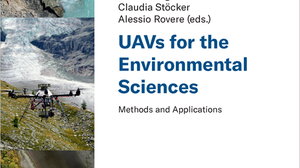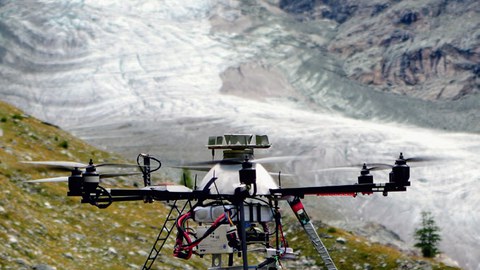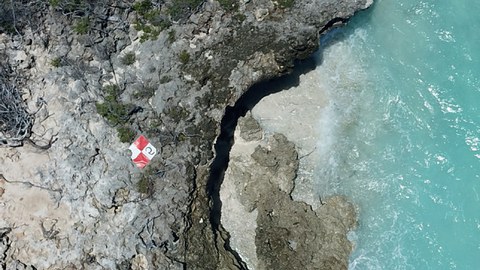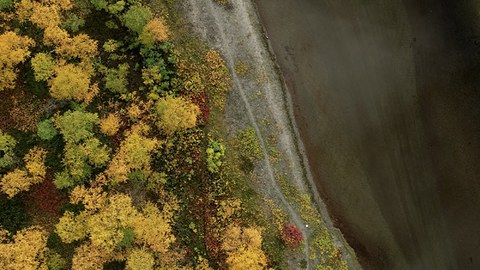UAVs in den Umweltwissenschaften
Lehrbuch zur Nutzung von UAVs in den Umweltwissenschaften erschienen!
A. Eltner, D. Hoffmeister, A. Kaiser, P. Karrasch, L. Klingbeil, C. Stöcker, A. Rovere, 2022. UAVs for the Environmental Sciences - Methods and Applications. wbg (Wissenschaftliche Buchgesellschaft), Darmstadt. Open Access, Link: doi.org/10.53186/1028514.

PREFACE
The application of unmanned aerial vehicles (UAVs) in environmental sciences has increased significantly in the last ten to fifteen years. We, as the editors of this book, have been and are still part of this development of increasing applications of UAVs in environmental studies, including the learning pathway. With the opportunities provided by UAVs, we are able to conduct research as never intended before. UAVs are causing a paradigm change in environmental sciences because it becomes possible to observe the Earth surface nearly continuously at spatial resolutions that change our measurement perspective from samples to continuums. Because of the nature of a ‘flying sensor’ and the mostly light-weight and affordable equipment, challenging and more difficult to access environments, such as deserts, wetlands, cliffy coasts, or alpine areas can be monitored for the first time or more easily than before. Compared to other surveying methods, such as terrestrial laser scanning or airborne (i.e. by plane) remote sensing, data can be achieved much easier, faster, and mostly with larger coverage or with higher temporal and spatial resolution. These advantages helped to establish a large group of researchers using UAVs for environmental studies, enabling them to observe processes, patterns, and changes, for the first time due to unprecedented spatio-temporal resolutions. Using the same technology and working in the area of environmental sciences brought us together on several conferences, where we recognized that we are all stumbling at the same tripping stones and pitfalls, such as choosing a suitable number and type of ground control points or preparing a task-specific flight plan and choosing the correct sensor. Thus, we started to realize that a comprehensive overview and teaching book for the application of UAVs in environmental sciences, that can prevent other researchers from repeating the same mistakes, is still missing. T his book elaborates on the fundamental basics of applying UAVs in environmental research, reaching from essentials in planning and preparing UAV flights, sensor systems, data collection and processing, data analysis to numerous examples of possible fields of application. We hope that this work, which was intended to be openly available from the beginning, can be of great support when working with UAVs in environmental research, directly achieving optimal data for the myriads of applications worldwide. During the course of editing this book, all of us were surprised by the numerous applications represented in this book, which never seem to end. Lately, the term ‘unmanned aerial vehicle’ is in discussion because this term can be considered as a not fully inclusive usage of language. Therefore, it has been proposed to use ‘unoccupied aerial vehicle’ or ‘uncrewed aerial vehicle’, giving the opportunity to stay with the same acronym.
Also, the usage of RPAS (Remotely Piloted Aircra System) has been suggested. However, the community, who uses UAVs in environmental sciences has not nalized its decision on what term to use. us, we decided to allow for the usage of all three possibilities to dene UAV. Furthermore, we would like to state that company names, e.g. in regard of soware, platforms or sensors are being used without specic recommendation. We like to thank the authors for their contributions; without their input this book would of course not have been possible. e authors cover a vast variety of scientic background and expertise spanning from engineering to photogrammetry, to geo-information science, to remote sensing, to geomorphology, to ecology, to hydrology and to geology, which very well underlines the diversity of the applicability of UAVs in environmental sciences. e book would also not have been possible without the support by the reviewers, who assisted our editing process. ey considered the chapters thoroughly and commented very supportively and helped to improve the book. We would like to thank Simon Buckley, Görres Grenzdörer, Sören Hese, Eliisa Lotsari, David Mader, Berit Schmitz, Ellen Schwalbe and Christian iele for providing their support and expertise. Furthermore, we want to express our gratitude towards Luise Hofmann. We thank the German Research Foundation (DFG) for its trust into a group of early career scientists and its support of the scientific network that allowed for regular meetings to advance our joint book editing. Last but not least, we are very thankful for the support of the publisher: wbg – Wissenschaftliche Buchgesellschaft. This publication has been produced as part of the work of the co-editor Anette Eltner at the Technische Universität Dresden, Junior Professorship for Geosensor Systems, and has been financially supported by the Technische Universität Dresden.
Anette Eltner
Dirk Homeister
Andreas Kaiser
Pierre Karrasch
Lasse Klingbeil
Claudia Stöcker
Alessio Rovere



